Comparing Numbers - Definition, Examples, Quiz, FAQ, Trivia
Master greater than, less than, and equal to concepts with visual examples and practice activities
What is Comparing Numbers?
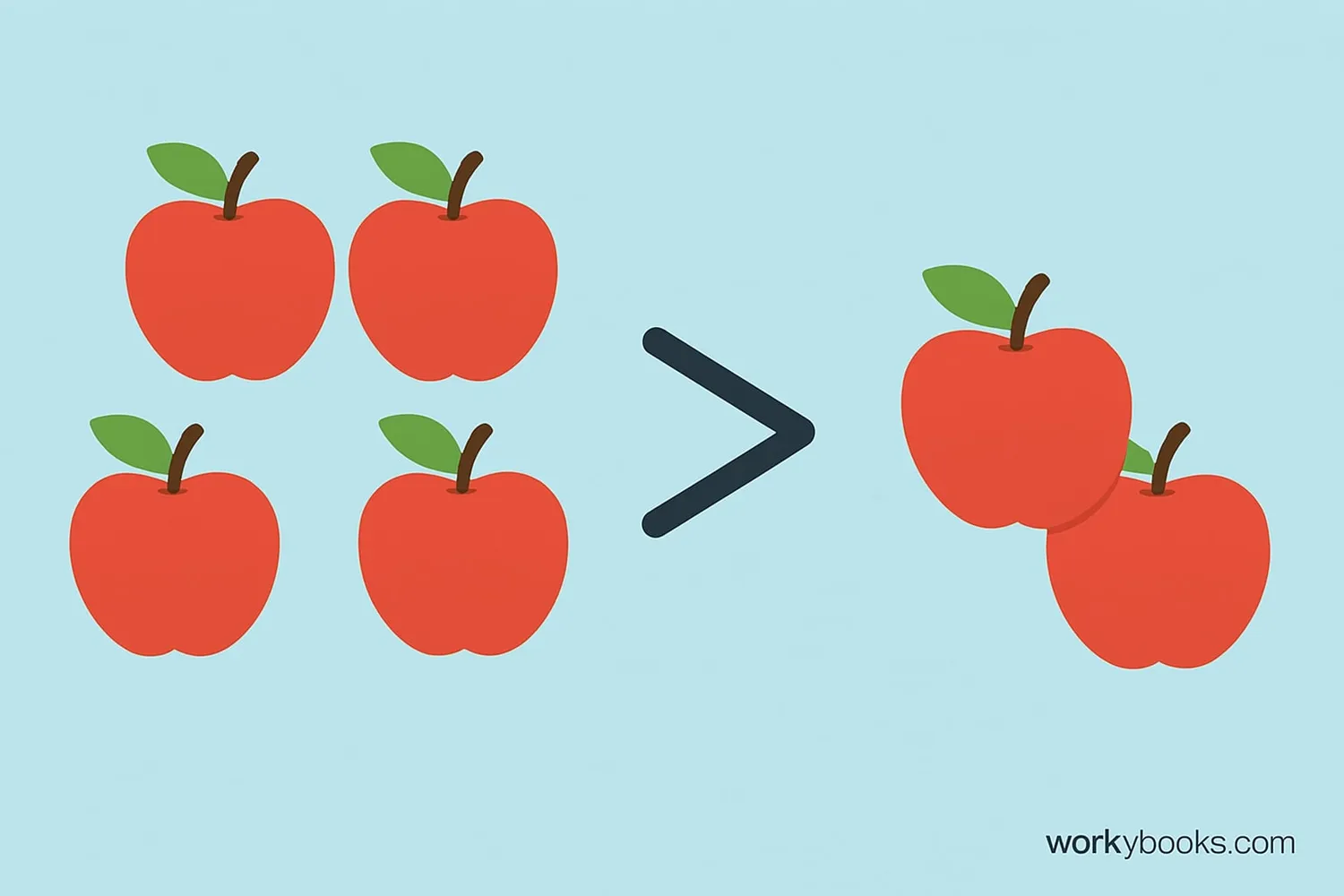
Comparing numbers means looking at two numbers and deciding which one is larger, which one is smaller, or if they are equal. This is a fundamental math skill that helps us understand relationships between quantities.
We use special symbols to show these relationships:
> for "greater than",
< for "less than", and
= for "equal to".
Comparing helps us in everyday life - when we choose the larger piece of cake, pick the container with more juice, or decide which number is bigger in a game. It's the foundation for more advanced math concepts like ordering numbers and understanding inequalities.
Key Concept
When comparing numbers, always start by looking at the leftmost digit. The number with the larger digit in the highest place value is greater.
Comparison Symbols
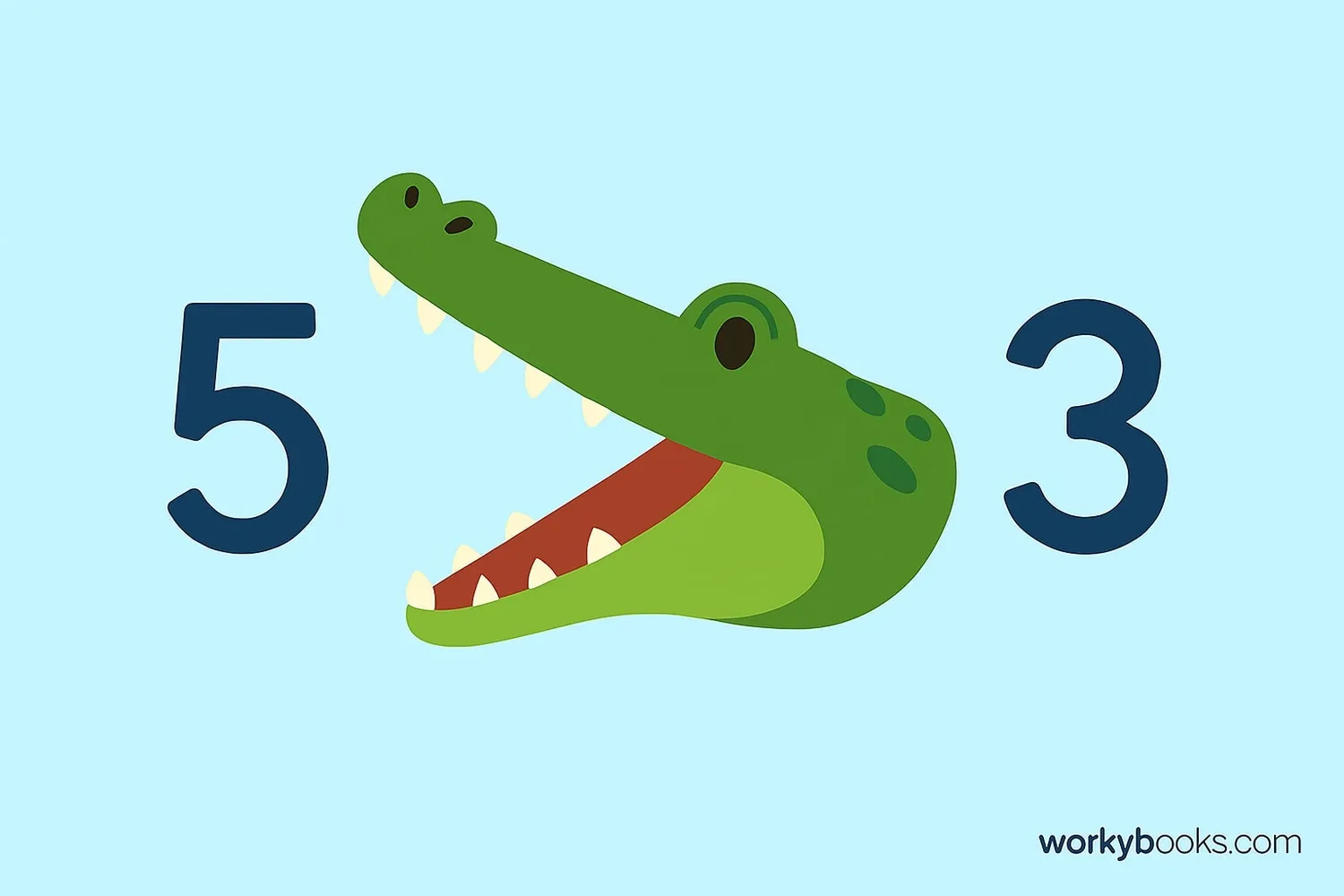
We use special symbols to compare numbers. These symbols are like math "words" that tell us about the relationship between two numbers:
Example: 8 > 5
Example: 3 < 7
Example: 4 = 4
Remember the alligator trick: The alligator always wants to eat the bigger number! The open mouth points to the larger number, and the tail points to the smaller number.
Rules for Comparing Numbers
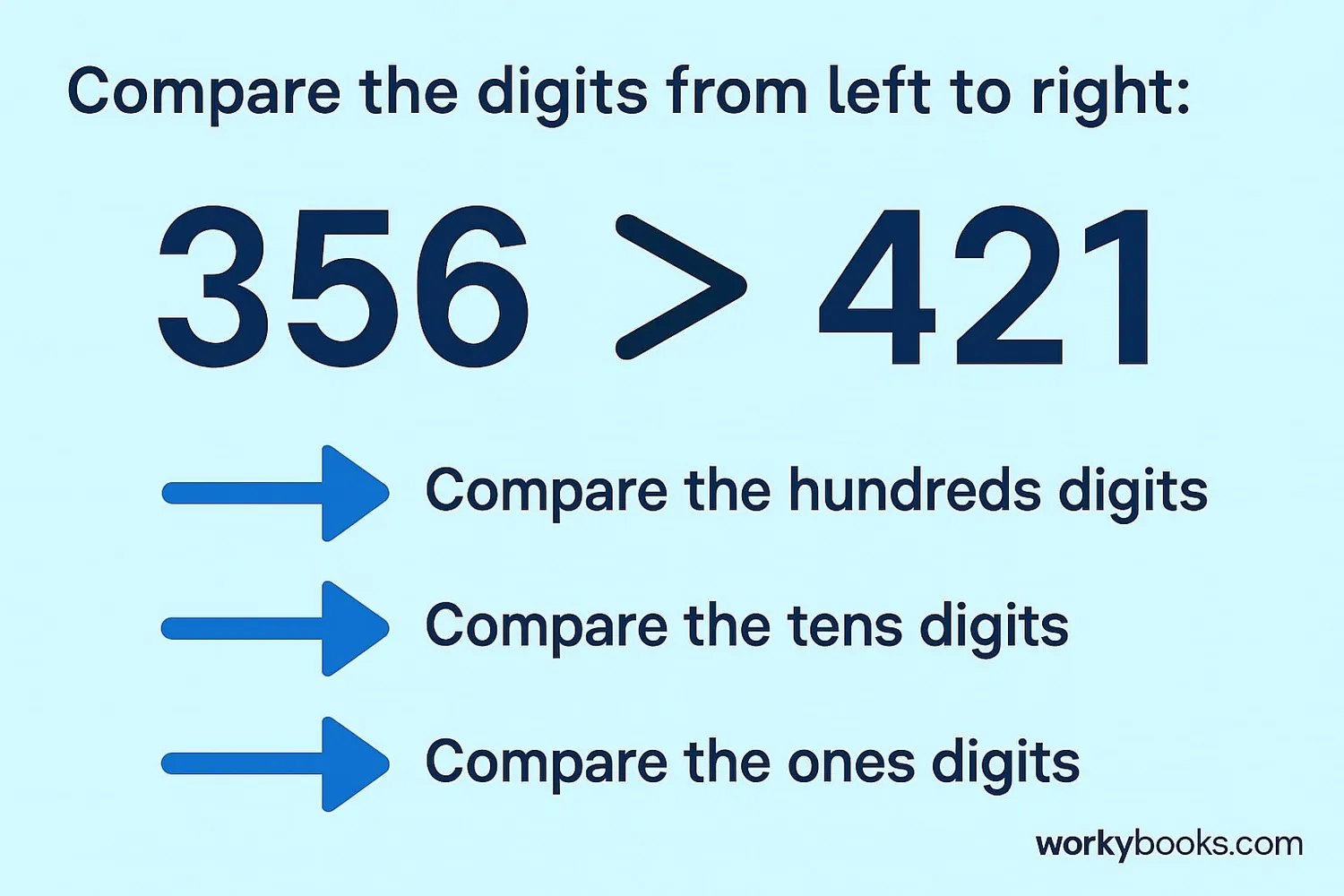
Follow these simple rules to compare any two numbers:
- Compare the number of digits: The number with more digits is always greater (235 > 98 because 235 has 3 digits vs 2 digits).
- If digits are equal: Start from the left and compare each digit:
- Compare the digits in the highest place value (hundreds, then tens, then ones)
- If digits are equal, move to the next place to the right
- If all digits are equal, the numbers are equal
- For decimals: Compare whole number parts first. If equal, compare decimal parts digit by digit from left to right.
- For fractions: Convert to common denominator or use cross-multiplication to compare.
Examples:
| Numbers | Comparison | Reason |
|---|---|---|
| 45 and 82 | 45 < 82 | Both 2-digit numbers, 4 < 8 in tens place |
| 367 and 365 | 367 > 365 | Hundreds and tens same, 7 > 5 in ones place |
| 1200 and 999 | 1200 > 999 | 1200 has 4 digits, 999 has 3 digits |
| 5.7 and 5.9 | 5.7 < 5.9 | Whole parts equal, 7 < 9 in tenths place |
Comparing on a Number Line
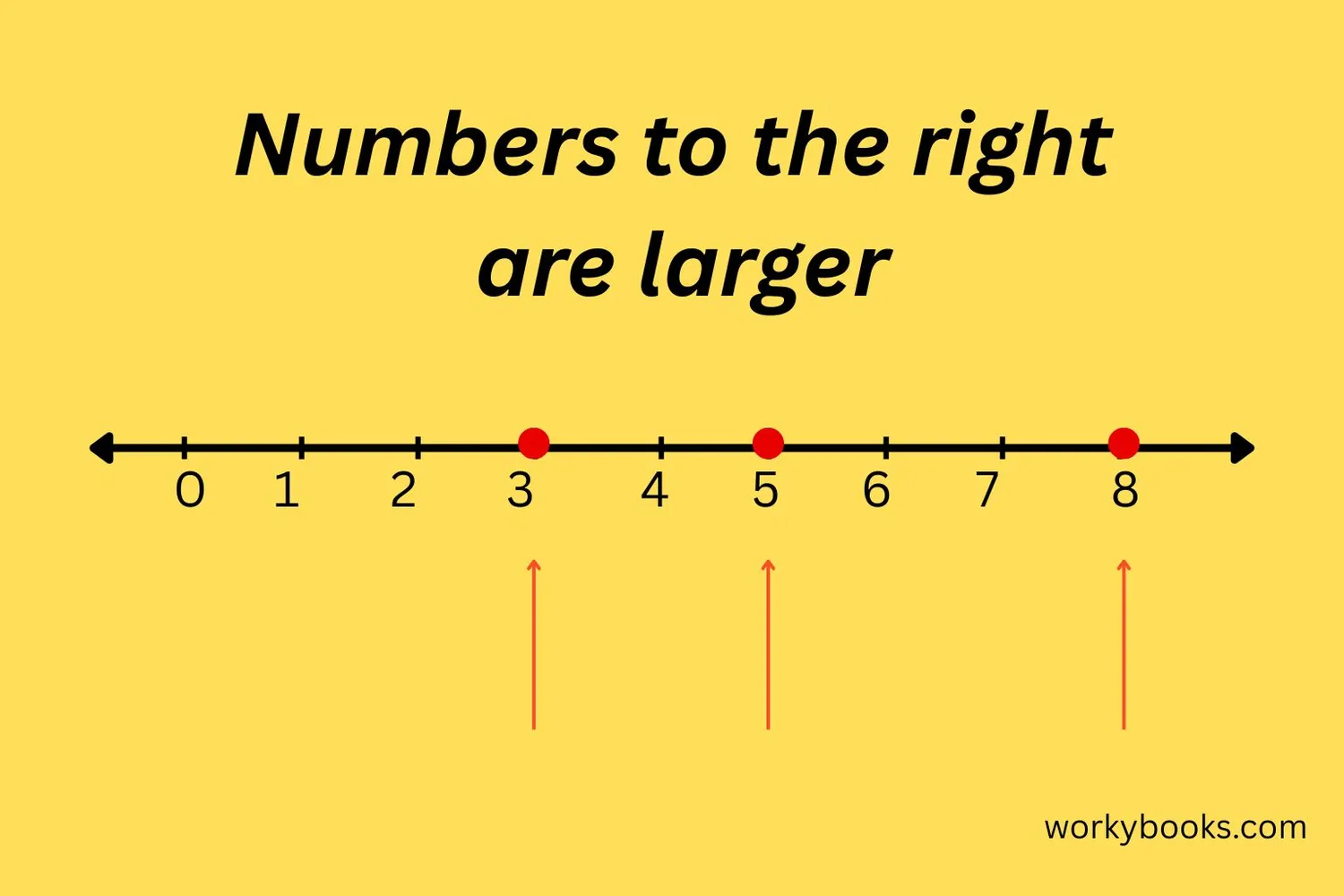
A number line is a powerful visual tool for comparing numbers. On a number line:
Key principles:
- Numbers increase as you move to the right
- Numbers decrease as you move to the left
- The number to the right is always greater than the number to the left
From the number line above, we can see:
- 3 is to the left of 5, so 3 < 5
- 8 is to the right of 5, so 8 > 5
- 5 is between 3 and 8, so 3 < 5 < 8
Real-World Examples
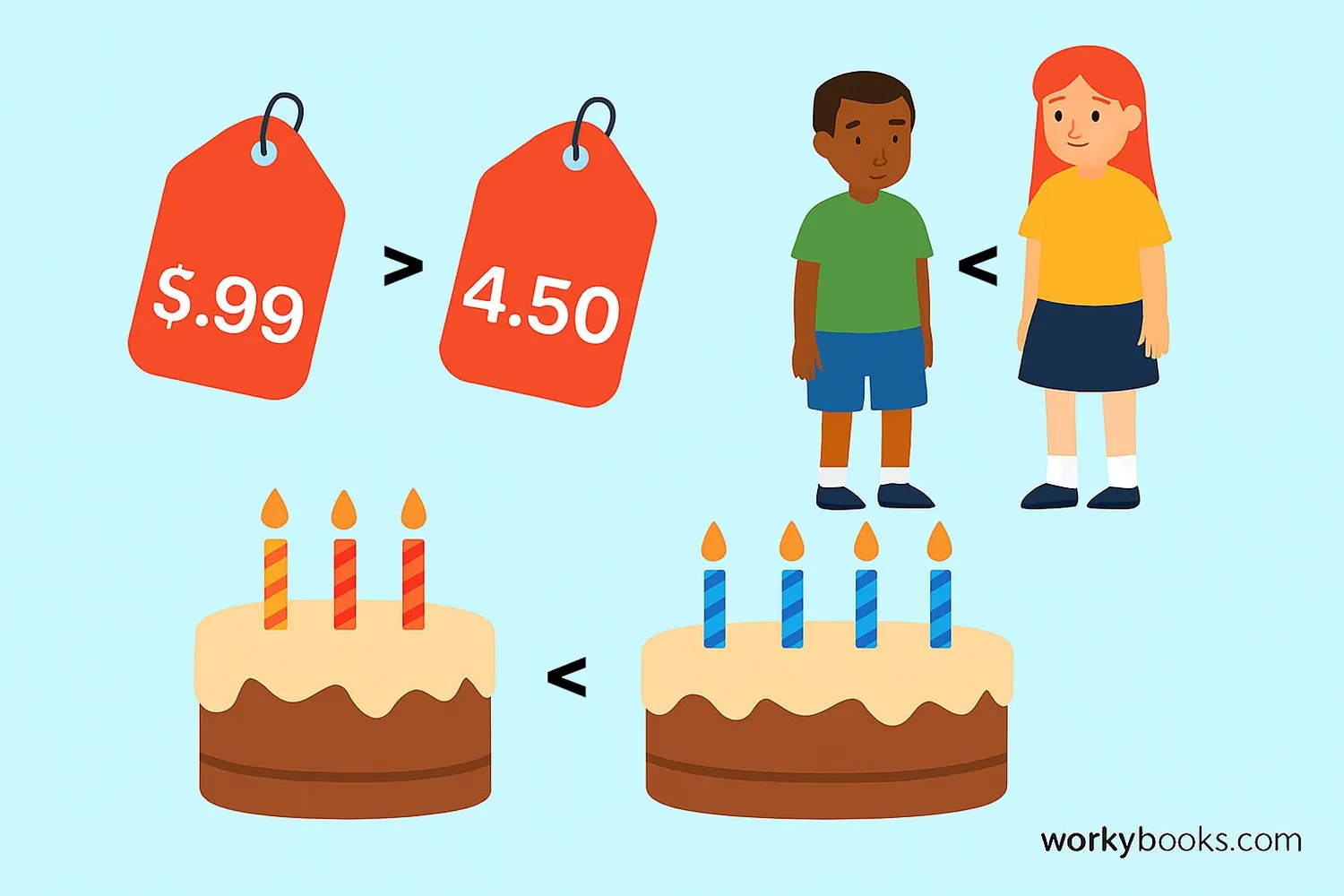
We compare numbers in many everyday situations. Here are some examples:
Shopping
Comparing prices: $4.50 < $5.99 means the first item is cheaper.
Height
Comparing heights: 135 cm > 120 cm means the first person is taller.
Age
Comparing ages: 10 years > 8 years means the first child is older.
Scores
Comparing game scores: 250 points > 180 points means the first player won.
Practice Tip
Look for numbers to compare around you - page numbers in books, prices at the store, or scores in games. Practice saying which is greater or less.
Practice Quiz
Test your number comparison skills with this 5-question quiz. Choose the correct answer for each question.
Frequently Asked Questions
Here are answers to common questions about comparing numbers:
Math Trivia
Discover interesting facts about numbers and comparisons:
Symbol Origins
The greater than (>) and less than (<) symbols were first used by English mathematician Thomas Harriot in 1631. Before this, mathematicians used words to describe these relationships.
Infinite Comparisons
There are infinitely many numbers between any two numbers. For example, between 1 and 2, you have 1.1, 1.11, 1.111, and so on forever. This is called the density property of real numbers.
Comparing the Very Small
The smallest measurable unit of time is called a "Planck time" - about 0.0000000000000000000000000000000000001 seconds. Comparing such small numbers requires special scientific notation.
Largest Prime Number
The largest known prime number has over 24 million digits! Comparing such large numbers requires computers and special algorithms since they can't be written out fully.


